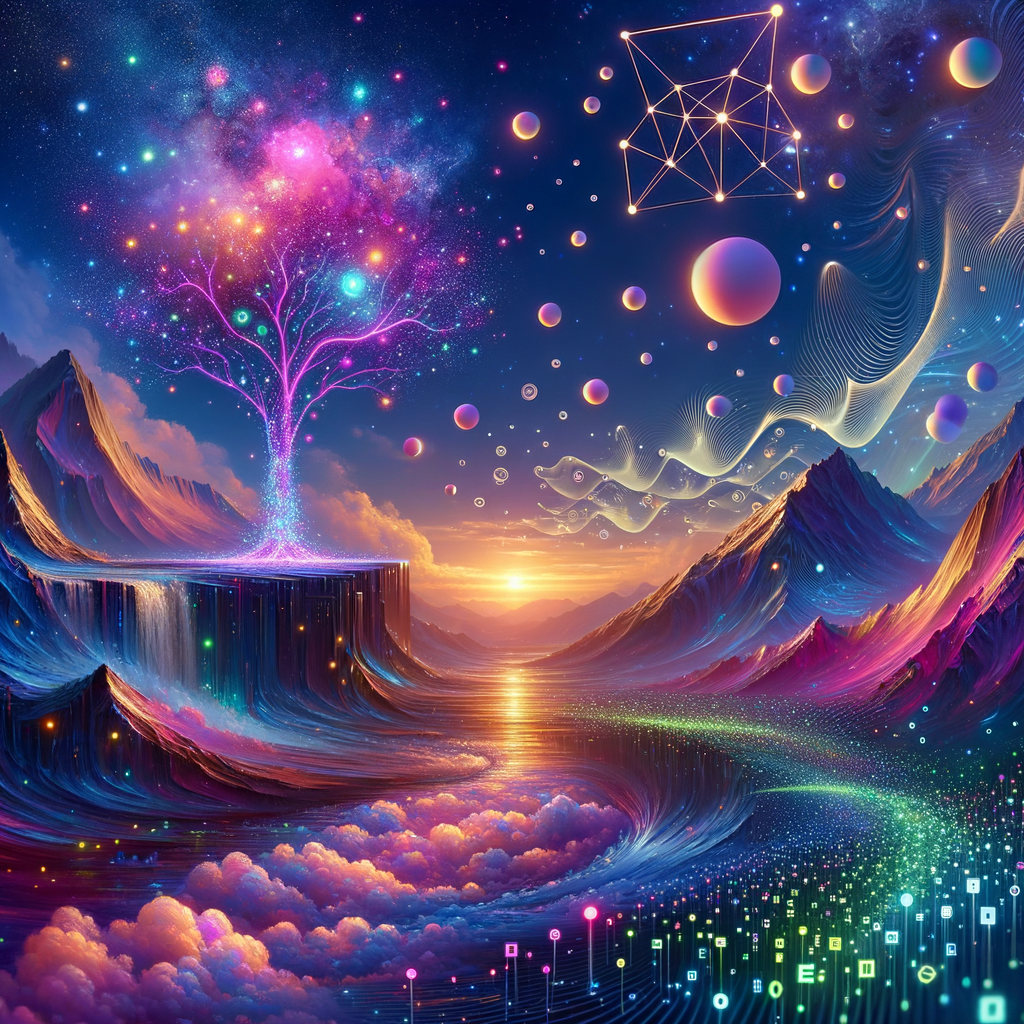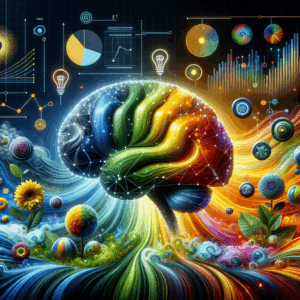
Surreal AI Art Prompts: Stunning Ideas For Unforgettable Creations
- Understanding Surreal AI Art
- Why Choose Surreal AI Art?
- Generating Stunning Art with AI Prompts
- Effective Surreal Art Prompts
- Ways to Craft Your Own Prompts
- Techniques for Generating Surreal AI Art
- Visualizing Abstract Concepts
- Blending Realities
- Playing with Color and Light
- Analyzing Notable Surreal Artists
- Learning from the Masters
- How to Use AI Tools for Creating Surreal Art
- Selecting the Right AI Tools
- Integrating AI with Traditional Techniques
- Exploring Themes in Surreal AI Art
- Common Themes in Surreal Art
- Creating a Cohesive Narrative
- Engaging with the Community
- Building Connections with Other Artists
- Attending Workshops and Exhibitions
- Final Thoughts on Surreal AI Art
- Frequently Asked Questions
- 1. What tools do I need to start creating surreal AI art?
- 2. Is it necessary to have traditional art skills to create AI art?
- 3. Can I use AI-generated art for commercial purposes?
- 4. How do I find inspiration for surreal art prompts?
- 5. How can I improve my surreal art skills?
- 6. What are some common mistakes beginners make in surreal AI art?
- 7. How often should I create surreal art to improve?
- 8. Are there any online courses for surreal AI art?
- 9. How do I critique surreal AI art effectively?
- 10. Can children learn to create surreal AI art?
- References
Understanding Surreal AI Art
Surreal AI art creates intriguing visual experiences that blend reality with dreams. It allows artists to explore their imagination through unconventional designs. The results provoke thought, emotions, and different interpretations. As technology evolves, generating surreal art becomes more accessible and exciting.
Utilizing AI tools enhances creativity. Artists can overlook visual boundaries with AI’s assistance. Suddenly, the only limitation is your imagination. With unique prompts, the possibilities expand, making surreal art appealing to both beginner and seasoned creators.
Why Choose Surreal AI Art?
Choosing surreal AI art has its perks. First, it encourages outside-the-box thinking. This genre shatters norms and embraces the bizarre. It challenges artists to combine elements that wouldn’t coexist in reality. Such imaginative freedom attracts artists yearning for originality.
Secondly, surreal art tells compelling stories. Every piece can evoke emotions or spark curiosity. Artists craft narratives through color, shapes, and composition, allowing viewers to interpret each piece uniquely. In essence, surreal AI art becomes more than a visual experience; it transforms into a journey.
Generating Stunning Art with AI Prompts
Effective Surreal Art Prompts
Creating engaging AI art begins with effective prompts. Good prompts should spark creativity and encourage unique compositions. Below are compelling prompt ideas that can inspire you:
1. A world where trees blossom with musical notes.
2. A city where houses float in the sky.
3. A dreamscape filled with dancing shadows and whispered secrets.
4. Animals wearing human clothes engaged in everyday activities like cooking.
5. A clock melting over a landscape filled with vibrant flowers.
These prompts ignite the imagination, leading to unexpected and captivating art. By experimenting with different themes, you’ll discover various styles and artistic approaches.
Ways to Craft Your Own Prompts
Crafting your own surreal art prompts can be a fun exercise. Start by blending familiar elements with unusual ones. Think of everyday objects and ask questions like, “What if…” or “Imagine a world where…”. This method stirs creativity.
Another approach is to visualize a juxtaposition. Consider combining contrasting concepts, like serenity and chaos. For example, picture a peaceful lake inhabited by creatures from outer space. Such contrasts create a rich foundation for artistic exploration.
Additionally, use sensory details in your prompts. Focus on sights, sounds, and tastes to build stronger imagery. A prompt like “a garden where flowers sing and the clouds taste like cotton candy” gives depth, enhancing your AI art.
Techniques for Generating Surreal AI Art
Visualizing Abstract Concepts
Surreal AI art often relies on abstract concepts. Artists visualize ideas that don’t have tangible forms, which can be daunting. However, breaking down these concepts can help. Focus on emotions or states of being. For example, to illustrate ‘freedom’, consider flight, light colors, and open spaces.
Incorporate symbolism. Metaphors and symbols can transform abstract thoughts into stunning visuals. For example, a cage with open bars can represent freedom. Using layers of meaning in your art leads to more profound interpretations.
Blending Realities
Blending different realities is a common technique in surreal art. This can be done by merging different environments. For instance, imagine a desert where snowflakes drift from the sky. This unexpected combination stirs curiosity and captures attention.
You can also mix historical elements with the modern world. Picturing dinosaurs walking among futuristic skyscrapers invites wonder. This technique adds narrative richness and visual intrigue.
Playing with Color and Light
Color and light heavily influence the mood of your art. Surreal art can evoke emotions through unusual color palettes. For instance, using vibrant, clashing colors can create intensity. In contrast, muted colors can evoke calmness.
Light sources play a significant role too. Experiment with shadow and light placement. A bright object surrounded by darkness enhances its prominence. This contrast creates a dramatic effect that captivates viewers.
Analyzing Notable Surreal Artists
To enhance your understanding of surreal AI art, it helps to analyze the work of renowned surreal artists. Here are a few influential figures who have shaped the genre:
| Artist | Style | Contribution |
|————————|————————————|———————————|
| Salvador Dalí | Dream-like scenes and bizarre imagery | Popularized surrealism |
| René Magritte | Playful, ironic visuals | Explored perception and reality |
| Max Ernst | Fantastic realism and collage | Merged various art techniques |
| Frida Kahlo | Personal symbolism and self-portrait | Blended reality with personal pain |
Each artist embraced surrealism uniquely, providing inspiration. Studying their techniques can enhance your artistic journey, leading to new discoveries.
Learning from the Masters
While creating your work, take inspiration from these masters. Analyze how they generate surreal experiences. Notice their use of color, perspective, and scale. These aspects can guide you in refining your own style.
Surrealism thrives on personal expression. Don’t worry about replicating their style. Instead, explore the themes and techniques that resonate with you, combining them with modern AI tools.
How to Use AI Tools for Creating Surreal Art
Selecting the Right AI Tools
Choosing the right AI tools is crucial. Numerous platforms offer unique capabilities. Some popular ones include:
– DeepArt: Allows users to apply various art styles to their photos.
– Artbreeder: Encourages collaborative creation and customization of images.
– DALL-E: Generates highly detailed images from textual descriptions.
By experimenting with these tools, you’ll discover which ones suit your creative process best. Each platform offers different features, so find the right fit for your artistic needs.
Integrating AI with Traditional Techniques
Don’t shy away from integrating AI with traditional art techniques. This fusion often yields stunning outcomes. For instance, you might sketch your ideas on paper and then use AI tools to enhance them digitally. This approach allows you to maintain personal style while leveraging AI technology.
Moreover, layering textures from traditional paintings over AI-generated images can create depth. This technique not only enhances the visual appeal but also adds a personal touch to your creations.
Exploring Themes in Surreal AI Art
Common Themes in Surreal Art
Surreal AI art thrives on various themes. Understanding these themes can guide your creations. Some common themes include:
1. Dreams and Nightmares: Portraying surreal landscapes inspired by dreams.
2. Identity and Existence: Exploring the human experience through visual metaphors.
3. The Passage of Time: Representing time with fluid concepts like melting clocks.
4. Nature and Technology: Juxtaposing organic elements with artificial constructs.
Exploring these themes enables you to craft evocative narratives that resonate with viewers.
Creating a Cohesive Narrative
A cohesive narrative enhances the impact of your surreal art. You can develop a storyline through recurring symbols or motifs. This approach draws viewers into your artwork, encouraging them to engage with the pieces more meaningfully.
For instance, if you frequently use motifs like clocks and trees, viewers will start to associate these symbols with your artistic narrative. Over time, this cohesion enriches the overall experience and makes your artwork more memorable.
Engaging with the Community
Building Connections with Other Artists
Joining online communities can foster growth as an artist. Platforms like Instagram, DeviantArt, or even Reddit provide spaces to share your work and seek feedback. Engaging with fellow artists opens doors to collaboration and inspiration. Connecting with others exacerbates learning and can lead to unexpected artistic breakthroughs.
Attending Workshops and Exhibitions
Consider attending workshops or exhibitions focused on surrealism and AI art. These events offer opportunities to deepen your knowledge and connect with experienced artists. Moreover, seeing surreal art in person can inspire and motivate your creations.
These interactions enrich your understanding of art and foster a sense of belonging in the creative community. Leverage these platforms to stay updated on trends and techniques influencing the world of surreal art.
Final Thoughts on Surreal AI Art
Navigating the world of surreal AI art is an exciting journey. With vivid imagination and the right tools, anyone can create stunning pieces that captivate viewers. Embrace the freedom that surrealism offers and allow your artistic voice to shine.
By exploring various prompts, themes, and techniques, you’ll likely discover your style. Remember, the key is to keep experimenting and staying curious. Each attempt, regardless of the outcome, contributes to your growth as an artist.
Frequently Asked Questions
1. What tools do I need to start creating surreal AI art?
You can start with online platforms like Artbreeder, DALL-E, and DeepArt. Basic graphic design software can also help to enhance your creations.
2. Is it necessary to have traditional art skills to create AI art?
No, traditional skills can enhance your work, but they aren’t necessary. AI tools are user-friendly and often require little to no artistic background.
3. Can I use AI-generated art for commercial purposes?
Always check the terms and conditions of the AI platform you’re using. Some may allow commercial use, while others may have restrictions.
4. How do I find inspiration for surreal art prompts?
You can find inspiration in various places: dreams, literature, nature, and even everyday life. Keeping a journal can help you jot down ideas.
5. How can I improve my surreal art skills?
Regular practice is essential. Engage with the artistic community, attend workshops, and analyze the work of renowned surreal artists to deepen your understanding.
6. What are some common mistakes beginners make in surreal AI art?
Beginners often overlook the importance of composition and color theory. Also, they may rely too heavily on AI without injecting personal creativity.
7. How often should I create surreal art to improve?
Consistency matters. Aim to create regularly—whether daily or weekly. The more you practice, the better you’ll become.
8. Are there any online courses for surreal AI art?
Yes, many platforms offer courses on surrealism and digital art. Websites like Skillshare, Coursera, or Udemy have relevant courses.
9. How do I critique surreal AI art effectively?
When critiquing, focus on composition, concept execution, and viewer impact. Always provide constructive feedback that encourages growth.
10. Can children learn to create surreal AI art?
Absolutely! Many platforms cater to younger audiences. Encouraging creativity at a young age fosters artistic expression in the future.
References
1. “The History of Surrealism” – Stanford Encyclopedia of Philosophy [Stanford]
2. “Experimenting with AI and Art” – Art in America [Art In America]
3. “What is Surrealism?” – Tate [Tate]
4. “Combining AI and Traditional Art” – Adobe Blog [Adobe]

